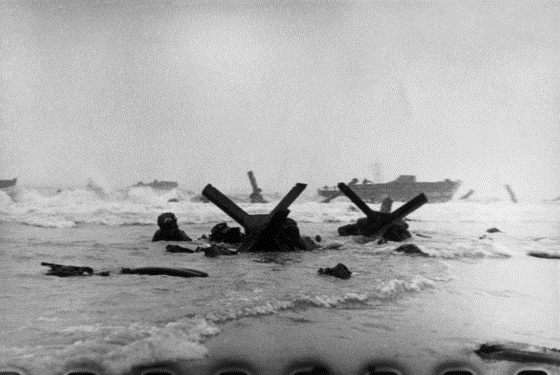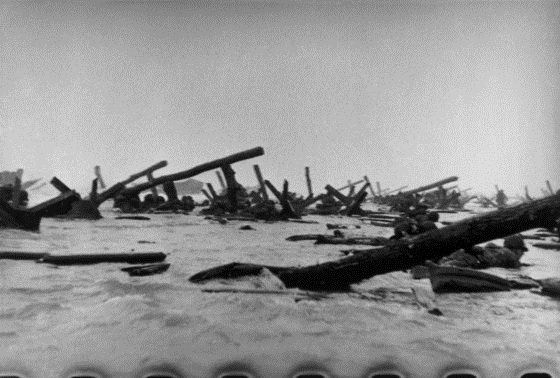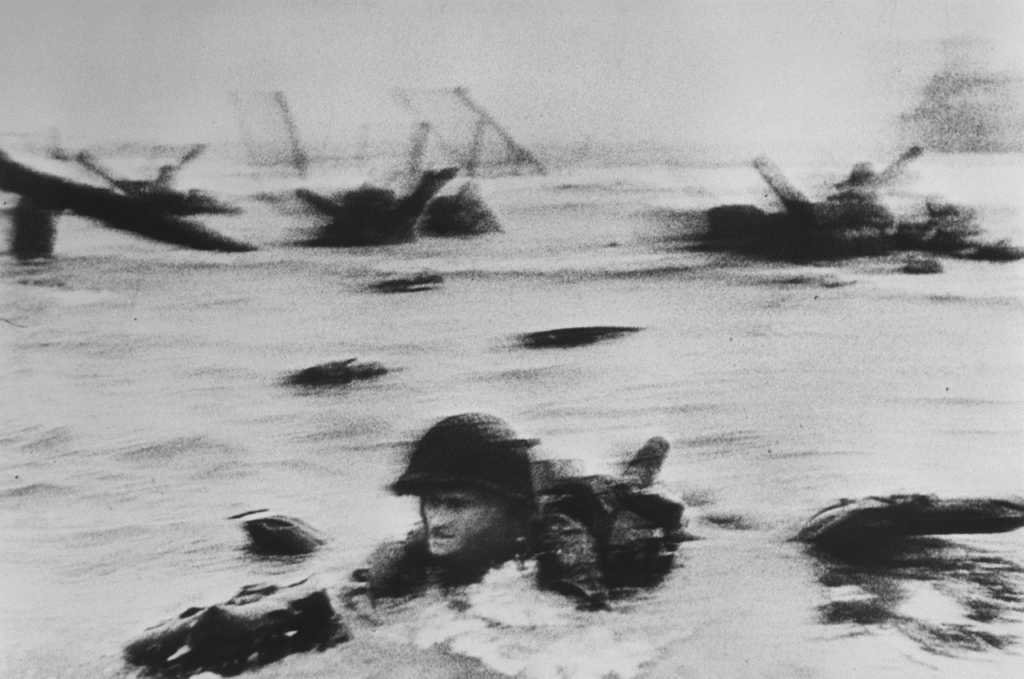Born in Budapest in 1913 as Endre Friedman to Jewish parents, he left Hungary after being accused of being a political opponent. In 1931, he fled to Berlin, where he settled and studied Political Science and Journalism. Endre began his career as a darkroom assistant. In 1933, facing the threat of the Nazi regime, he left Germany and settled in Paris, where he met Gerda Taro, a German Jewish refugee. Gerda quickly became Endre’s agent, writing captions for his photographs, and he also taught her photography and shooting. They were not only companions, but also coworkers, united by their strong political ideas.
Together, they invented “Robert Capa’s legend.” In the spring of 1936, facing difficulties selling Endre’s photographs, they devised a plan, creating the story of a famous American photographer named Robert Capa. Endre’s photos were sold and published under this alias. This is how it all began.
Gerda and Robert Capa covered the Spanish Civil War, where he gained his international reputation, always following one motto: photography is about being close. His goal was to capture the moment when a person faces danger or death. He believed in the fragile nature of human existence, which is why many of his pictures are poorly framed and blurred.
Gerda died in 1937 while covering violent fighting in Spain. She was the first female reporter killed in action. Capa traveled to China to cover the Sino-Japanese War and finally emigrated to New York in 1939 when the war broke out. As a citizen of an enemy country, Capa was not initially allowed to work as a photographer or journalist in the United States. He eventually succeeded in obtaining permission from the U.S. Army to work as a reporter.
Robert Capa covered the landings in North Africa and Italy in 1942 and 1943. On D-Day, he was one of the six photographers certified by Life magazine to cover the landings in Normandy. On June 6th, 1944, Capa landed on Omaha Beach with the E Company of the 116th Regiment of the 1st Infantry Division, as part of the first wave. Hidden behind a steel pole, a beach obstacle, he shot four rolls of film with a Contax camera. The tide was rising, and with water up to his chest, he finally reached a tank for better cover and ended up lying in the sand.
“It was the ugliest beach in the world.”


He shot while lying in the sand without raising his head, so his pictures were filled with wet boots, smoke, burnt tanks, sinking ships, and bodies. His hands were shaking that day until a barge filled with medics landed on the beach. They all poured out, and at that exact moment, Robert Capa decided to leave the beach and run to the ship. He never returned.
A week later, Capa was told that he had taken the best pictures of the invasion. However, due to a mistake in the lab, three of the four rolls were accidentally destroyed. Only 11 pictures were saved, and they became known as “The Magnificent Eleven.”
“The pictures are there, and all you have to do is take them.”

Omaha Beach is forever etched in our collective memory thanks to Capa’s famous and harrowing pictures from that day. We all recognize these images—they are the most powerful and overwhelming pictures of the invasion. He managed to capture not only the horror and fear, but also bravery and heroism. He understood the visual power of photography.
Capa also covered the Liberation of Paris and the Battle of the Bulge.
For his work during World War II in the European Theater, he was awarded the Medal of Freedom citation by General Eisenhower.
After the war, he traveled to Russia, Poland, Hungary, and Israel, where he made documentaries about the birth of the new country.
In 1947, he founded the famous Magnum agency, which allowed photographers to retain their copyright.
In 1954, while in Japan, he was asked by Life to cover the Indochina War. While photographing French soldiers, he stepped on a landmine and was killed. He was 40 years old. He is buried alongside his mother and brother at Amawalk Hill Cemetery near New York.
Robert Capa is commemorated at the War Reporters Memorial Garden in Bayeux, Normandy. This garden, unique in Europe, honors journalists who have been killed while doing their job since 1944. Twenty-seven memorial stones, naming 2,000 journalists killed worldwide, are erected. Each year, a new stone is unveiled during the Prix Bayeux for War Correspondents.
Bayeux was the first town to be liberated in France on June 7th, 1944, and it was also the place where the first newspaper of free France was published.
